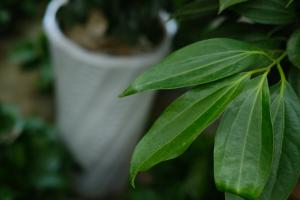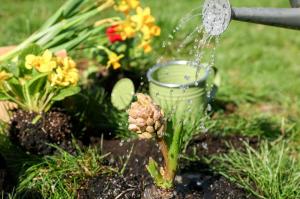Introduction
Rubber tree plants are a popular indoor plant due to their ease of care and their ability to purify the air. However, over time these plants can become quite large and require trimming to maintain their appearance and health. In this article, we will discuss how to trim back a rubber tree plant to ensure it remains a beautiful addition to your home.
Why Trim a Rubber Tree Plant?
There are several reasons why you may want to trim back a rubber tree plant. Firstly, these plants can become quite large and bushy which can make them difficult to manage. Trimming back the plant will help to keep it contained and looking tidy. Secondly, if your rubber tree has become too large for its current location, trimming back can help to reduce its size and make it more manageable. Lastly, trimming back a rubber tree plant can help to promote new growth and keep the plant looking healthy.
When to Trim a Rubber Tree Plant
The best time to trim back a rubber tree plant is during the spring or summer months when the plant is actively growing. This will allow the plant to recover more quickly from the pruning and will also promote new growth. Avoid pruning during the fall or winter months as this can cause stress to the plant and may inhibit its growth.
Tools Needed
Before you begin trimming your rubber tree plant, you will need to gather several tools. These include a pair of sharp pruning shears, a clean cloth or paper towel, and rubbing alcohol. The pruning shears should be sharp to ensure a clean cut which will help to promote new growth. The clean cloth or paper towel should be used to wipe down the shears with rubbing alcohol to prevent the spread of disease.
How to Trim Back a Rubber Tree Plant
Begin by identifying the branches that need to be trimmed back. Look for any dead or diseased branches, as well as any branches that are growing out of shape or beyond the desired size. Using your pruning shears, make a clean cut just above the leaf node where the branch meets the stem. Be sure to angle the cut away from the leaf node to prevent water from collecting on the cut and causing disease. Repeat this process for all branches that need to be trimmed back.
Once all of the branches have been trimmed back, take a step back and assess the overall shape of the plant. If necessary, make additional cuts to achieve the desired shape. Be sure to avoid removing more than 30% of the plant during a single trimming session as this can cause stress and inhibit growth.
Aftercare
After trimming back your rubber tree plant, be sure to water it thoroughly to help it recover from the pruning. You may also want to consider fertilizing the plant to promote new growth. Avoid placing the plant in direct sunlight for a few days after pruning as this can cause additional stress to the plant.
Conclusion
Trimming back a rubber tree plant is an essential part of caring for it. By following the steps outlined in this article, you can ensure that your rubber tree remains healthy and beautiful for years to come. Remember to trim back the plant during the spring or summer months, and avoid removing more than 30% of the plant during a single trimming session. With proper care and attention, your rubber tree plant will continue to be a stunning addition to your home.

 how many times do yo...
how many times do yo... how many planted tre...
how many planted tre... how many pine trees ...
how many pine trees ... how many pecan trees...
how many pecan trees... how many plants comp...
how many plants comp... how many plants can ...
how many plants can ... how many plants and ...
how many plants and ... how many pepper plan...
how many pepper plan...






























